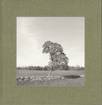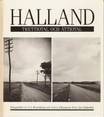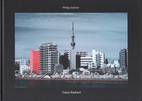Gerry Johansson - Tree Stone Water, Libraryman, 2015, Stockholm

Gerry Johansson - Tree Stone Water (Book spine)

Gerry Johansson - Tree Stone Water (Book back)

Gerry Johansson - Tree Stone Water (Book front)

Gerry Johansson - Tree Stone Water (Slipcase front)

Gerry Johansson - Tree Stone Water (Slipcase spine)

Gerry Johansson - Tree Stone Water (Slipcase back)

Sample page 1 for book " Gerry Johansson – Tree Stone Water", josefchladek.com

Sample page 2 for book " Gerry Johansson – Tree Stone Water", josefchladek.com

Sample page 3 for book " Gerry Johansson – Tree Stone Water", josefchladek.com

Sample page 4 for book " Gerry Johansson – Tree Stone Water", josefchladek.com

Sample page 5 for book " Gerry Johansson – Tree Stone Water", josefchladek.com

Sample page 6 for book " Gerry Johansson – Tree Stone Water", josefchladek.com

Sample page 7 for book " Gerry Johansson – Tree Stone Water", josefchladek.com

Sample page 8 for book " Gerry Johansson – Tree Stone Water", josefchladek.com

Sample page 9 for book " Gerry Johansson – Tree Stone Water", josefchladek.com

Sample page 10 for book " Gerry Johansson – Tree Stone Water", josefchladek.com

Sample page 11 for book " Gerry Johansson – Tree Stone Water", josefchladek.com

Sample page 12 for book " Gerry Johansson – Tree Stone Water", josefchladek.com

Sample page 13 for book " Gerry Johansson – Tree Stone Water", josefchladek.com

Sample page 14 for book " Gerry Johansson – Tree Stone Water", josefchladek.com
Other books by Gerry Johansson (see all)

























Other books tagged Scandinavian (see all)









Other books tagged Sea (see all)









Other books tagged Japan (see all)









Other books tagged Trees (see all)









Other books tagged Black & White (see all)









Other books by Libraryman (see all)






Books to shop at anzenbergergallery-bookshop.com
Softcover, in grey paperboard slipcase with typography in white foil, design by Tony Cederteg, edition of 375 copies, numbered and signed.
„After visiting Japan during the 70’s and 80’s, and after the disappointment to see that even regional cities had been developed to the point where they all resembled a mini-Tokyo, Gerry Johansson decided to focus his creative energy on capturing the environment surrounding the Japanese people, as opposed to the people themselves. He chose not to merely record the bustling modern development of Ehime Prefecture, the core of Shikoku, but to also capture the exceptional natural beauty of the region. He took his camera to the rocks and mountain streams of the Nametoko Valley, deep inside forests teeming with the energy of life, and to the waters of the Seto Inland Sea.
From a conversation with Gerry Johansson
LM: How is it that you photographed in Japan, and specifically in Ehime Prefecture?
Gerry: In 1999 I was invited by an organization called the EU Japan Fest. They initiated a large documentation project called European Eyes On Japan. Every year, two or three European photographers are invited to depict an area in Japan. Since Japan is divided into 47 prefectures the idea is that all would be photographed. I photographed during three weeks in Ehime Prefecture on Shikoku island, south of Hiroshima. All work is shown in catalogs and exhibitions in Japan and Europe, and the project is still ongoing. Last year's catalog was the 16th. It should by now be the most long-lived photo project.
LM: What would you say is the most marked difference from your previous trips to Japan, during the 70s and 80s, to return in the late 90s, in socio-geographical and architectural terms?
Gerry: I was in Tokyo for the first time in the late 70s. At the time, Tokyo had great similarities to other big cities, but with a vast mixture of high-rises and one-storey houses with narrow alleys. Road and street signs with Western text did not exist. Every 15th year it seems to have been built on one floor so on my last visit to Tokyo in 2004 was the three-story houses that mattered. In addition, Tokyo has become modern in a way that I do not believe that European cities will ever be. When I watch older Japanese films I think it reminds me a lot of how it looked in Ehime 1999.
LM: You have a tendency to let some out of your photo series be below the cap, sometimes for more than a decade before they see daylight and publishing. Is there a conscious thought about the possibility to explore them more for longer periods of time and through changes, or does your work require to flourish underground before they can be considered as temporal or timeless?
Gerry: I do not mind that things may lie and ferment a little, but the main reason is probably that up to 2005 it was quite difficult to exhibit the images and to do books. Almost all the books I have done I have put out myself, but often in collaboration with publishers who was responsible for distribution and sales. I have found it easiest to do it myself. I have no desire to stand and argue for my own photos. I’ve had good printing company contacts since back in the day when I used to work as a designer and publisher of photo books and magazines, so it was never a problem. I’m also glad that I’ve found designers who understands how I want it. For the most part I have made smaller exhibitions shortly after the shooting. Then, the images have been pushed into the shelves and I have been working on new projects. Since 2005 I have actually been quite diligent and many of the works have come as a book within a year. Since the early 90s I basically photograph the same way so pictures can go in and out of my series, without looking outdated, nor different. Everything looks the same. It's very convenient.
LM: What are the print choices with the special editions?
Gerry: There are three images, one for each chapter.
LM: You live in Höganäs (a town in the Swedish province of Skåne, known for its fishing and pottery) since 1969. How much does your home environment affect your view on the world you are traveling in and documenting?
Gerry: I prefer to live somewhere where there is not teeming with photographers. We have a large and spacious home that houses my lab, my study, my coffee nook and my computer. Everywhere I go, is pretty random. I hear something on the radio that sounds interesting, receive an invitation or a scholarship. Strangely, I always end up in interesting places.
LM: Tree, stone, water according your wishes?
Gerry: I would really like to make a fine picture of bamboo. I’ve been close a few times, but it has never been perfect. I don’t believe I have a favourite stone. Most of them look pretty good — especially if they’ve been rippled at shore a few thousand years. Ice is a great form of water.“
Pages: 48
Place: Stockholm
Year: 2015
Publisher: Libraryman
Size: 16 x 20 cm (approx.)




















